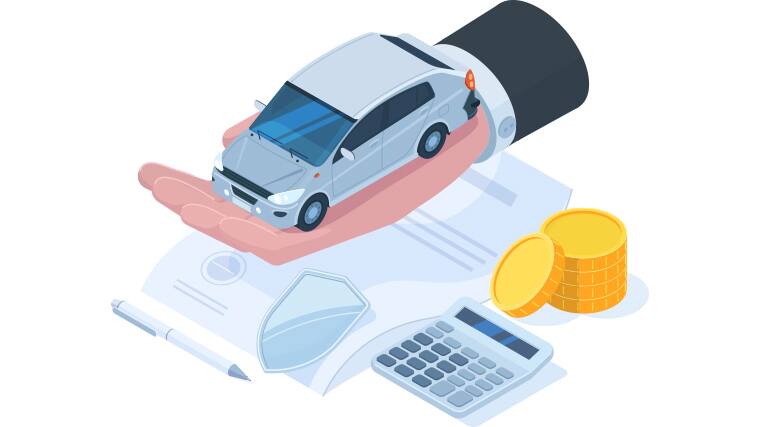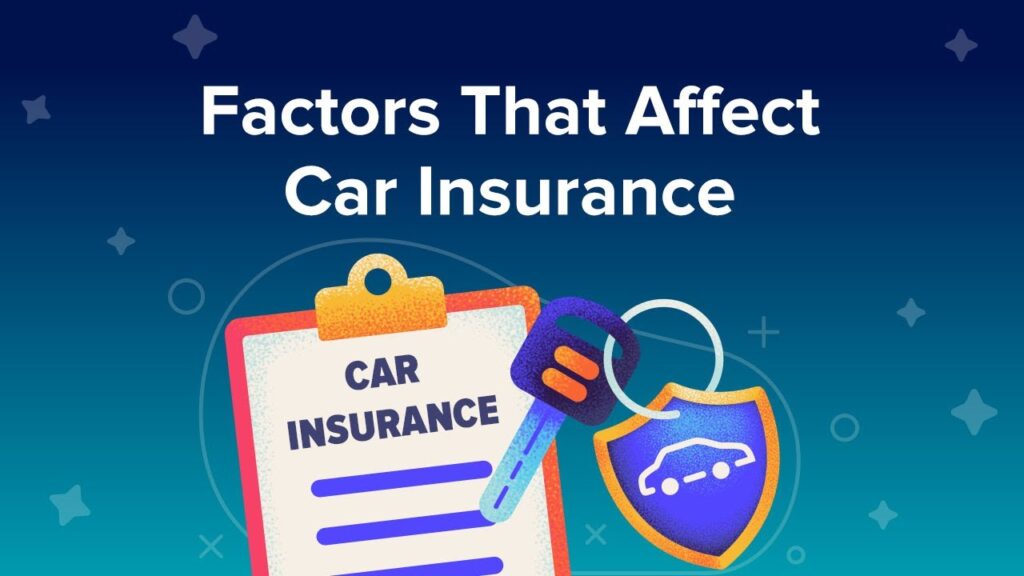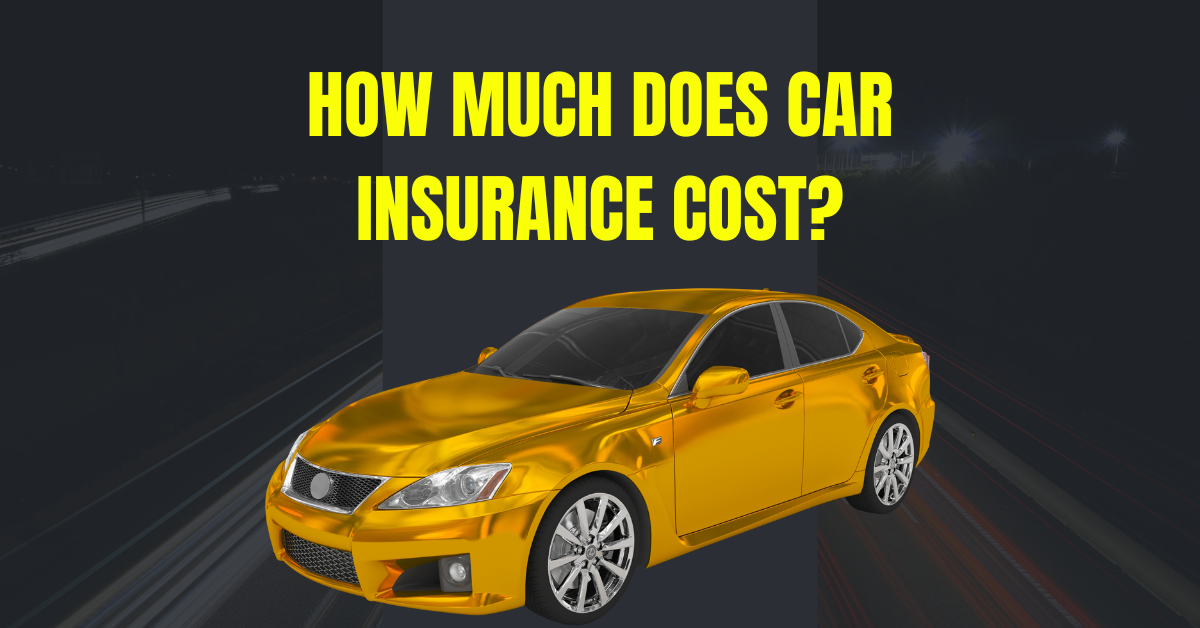Does Car Insurance Cost
Anyone wishing to efficiently manage their budget and make sure they have the required financial protection when driving must have a thorough understanding of the cost of auto insurance. Since there are many variables that affect auto insurance premiums, it’s critical to understand what to anticipate and how to control these expenses. We’ll go over the variables that influence auto insurance rates in this extensive guide, along with the most recent cost averages for 2024 and advice on how to cut costs.

Why Understanding Car Insurance Costs is Important
Car insurance is a significant part of owning and operating a vehicle. It not only protects you financially in the event of an accident but also affects your overall budget. By understanding car insurance costs, you can make informed decisions, choose the right coverage, and potentially save money. DLIMS
Factors Affecting Car Insurance Costs
Several factors determine how much you will pay for car insurance. Understanding these can help you anticipate your costs and find ways to reduce them.

Driver’s Age and Experience
Age is a critical factor in determining car insurance premiums. Younger drivers, particularly teenagers, are considered high-risk due to their lack of experience and higher likelihood of being involved in accidents. As a result, they tend to face higher premiums.
Experience also plays a role. New drivers, regardless of age, might face higher rates compared to those with a longer driving history.
Example: A 17-year-old driver could pay significantly more than a 35-year-old driver with 15 years of experience.
Vehicle Make and Model
The type of car you drive greatly influences your insurance costs. Insurers consider the car’s value, repair costs, safety features, and likelihood of theft.
- Luxury cars often cost more to insure due to their high repair costs and attractiveness to thieves.
- Sports cars usually have higher premiums due to their higher risk of being involved in accidents.
- Safety features like airbags and anti-lock brakes can lower your rates since they reduce the risk of injury.
Example: A 2024 Toyota Camry will generally cost less to insure than a 2024 BMW 5 Series.
Location
Where you live affects your car insurance rates. Insurers analyze local data on accidents, theft, weather patterns, and more to determine rates.
- Urban areas typically have higher rates due to increased traffic and higher risk of accidents and theft.
- Rural areas often have lower rates as there is less traffic and fewer accidents.
Example: Living in downtown Los Angeles will likely result in higher premiums than living in rural Iowa.
Driving Record
Your driving history is one of the most significant factors in determining your car insurance rates. Insurers look at:
- Accidents: At-fault accidents can significantly increase your premiums.
- Traffic violations: Speeding tickets, DUIs, and other violations can lead to higher rates.
- Claims history: Frequent claims can indicate higher risk and lead to increased premiums.
Example: A driver with multiple speeding tickets and a recent at-fault accident will pay more than a driver with a clean record.
Coverage Type
The type and amount of coverage you choose will directly impact your insurance costs. Common types of coverage include:
- Liability coverage: Covers damages to others if you’re at fault in an accident.
- Comprehensive coverage: Covers non-collision incidents like theft, vandalism, and natural disasters.
- Collision coverage: Covers damages to your vehicle in a collision, regardless of fault.
- Uninsured/underinsured motorist coverage: Covers you if you’re hit by a driver with insufficient insurance.
Example: A policy with full coverage (liability, comprehensive, and collision) will cost more than a minimum liability-only policy.
Credit Score
In many states, insurers use credit scores to help determine rates. A higher credit score generally indicates a lower risk and can result in lower premiums.
Example: A driver with a credit score of 800 will likely pay less than a driver with a score of 600.
Average Car Insurance Costs in 2024
Let’s delve into the latest data on car insurance costs to give you a clear picture of what to expect.
National Averages
In 2024, the average annual car insurance premium in the United States is approximately $1,700. This figure includes a variety of coverage levels and driver profiles.
- Liability-only coverage: Around $600 to $800 per year.
- Full coverage (liability, comprehensive, collision): Typically $1,200 to $1,900 per year.
State-by-State Comparison
Car insurance costs vary significantly by state due to differences in state laws, accident rates, and other factors. Here are some examples:
- Michigan: Average annual cost around $2,800 (one of the highest due to no-fault insurance laws).
- Maine: Average annual cost around $900 (one of the lowest due to fewer accidents and lower population density).
- California: Average annual cost around $1,900.
Urban vs. Rural Areas
- Urban areas: Higher costs due to increased traffic and higher accident rates. For example, in New York City, the average premium might be around $2,200.
- Rural areas: Lower costs due to less traffic. For instance, in rural Wyoming, the average premium might be around $1,100.
Demographic Differences
- Young drivers (under 25): Average annual cost around $2,500 to $3,000.
- Middle-aged drivers (30-50): Average annual cost around $1,200 to $1,700.
- Senior drivers (65+): Average annual cost around $1,000 to $1,500.
How to Calculate Your Car Insurance Premium
Understanding how your premium is calculated can help you estimate your costs and identify ways to save.

Explanation of Premium Calculation
Insurers use complex algorithms to calculate premiums based on various factors such as your personal information, driving history, vehicle details, and location.
Example of a Premium Calculation
Consider a 30-year-old driver with a clean record, driving a 2024 Honda Accord, living in a suburban area in Texas:
- Base rate: $600
- Age and experience: +$100
- Vehicle type: +$150
- Location: +$50
- Coverage level (full): +$600
Total annual premium: $1,500
Tools and Resources for Estimating Insurance Costs
Many insurers offer online calculators where you can input your information to get an estimated premium. Additionally, third-party websites can provide comparison tools to help you find the best rates.
Ways to Save on Car Insurance
Reducing your car insurance costs can be achieved through various strategies. Here are some tips:
Compare Quotes
Shopping around is one of the most effective ways to lower your premiums. Different insurers offer different rates for similar coverage.
- Tip: Get at least three quotes before making a decision.
Bundle Policies
Combining multiple insurance policies, such as home and auto, with the same insurer can lead to significant discounts.
- Tip: Ask your insurer about multi-policy discounts.
Maintain a Good Driving Record
Avoiding accidents and traffic violations is crucial for keeping your premiums low.
- Tip: Consider defensive driving courses to improve your skills and potentially lower your rates.
Take Advantage of Discounts
Insurers offer a variety of discounts that can help lower your premiums:
- Good driver discount: For drivers with a clean record.
- Student discount: For full-time students with good grades.
- Multi-car discount: For insuring more than one vehicle.
- Tip: Ask your insurer about all available discounts to maximize your savings.
Increase Deductibles
Raising your deductibles can lower your premiums, but it means you’ll pay more out of pocket in the event of a claim.
- Tip: Consider your financial situation and choose a deductible that you can afford in an emergency.
Improve Your Credit Score
Since credit scores can affect your insurance rates, improving your credit can lead to lower premiums.
- Tip: Pay your bills on time, reduce debt, and regularly check your credit report for errors.
When to Review Your Car Insurance Policy
Regularly reviewing your car insurance policy ensures you have the right coverage and are not overpaying.
Recommended Frequency for Reviewing Your Policy

It’s advisable to review your policy annually or whenever you experience a significant life event.
Life Events That Should Trigger a Review
- Moving: Changing your address can affect your rates.
- Buying a new car: New vehicles may require different coverage.
- Changes in driving habits: If you start driving less, you might be eligible for a low-mileage discount.
- Marriage or divorce: These events can impact your premiums.
Common Myths About Car Insurance Costs
There are several misconceptions about car insurance that can lead to confusion. Let’s debunk some common myths:
Myth 1: Red Cars Cost More to Insure
Truth: The color of your car has no impact on your insurance rates. Insurers do not consider vehicle color when calculating premiums.
Myth 2: Older Cars Are Always Cheaper to Insure
Truth: While older cars might have lower comprehensive and collision coverage costs, they can be more expensive to insure if they lack modern safety features.
Myth 3: Only Full Coverage Protects You
Truth: Full coverage (liability, comprehensive, and collision) offers extensive protection, but sometimes liability-only coverage is sufficient, especially for older vehicles.
Myth 4: You Must Use the Insurer’s Preferred Repair Shops
Truth: You can usually choose your repair shop. However, using a preferred shop can simplify the claims process
Conclusion
Every driver should be aware of how auto insurance rates are set. You may more accurately estimate your rates and make well-informed coverage options by taking into account variables like age, vehicle type, location, driving record, policy type, and credit score.
The average cost of auto insurance in the US in 2024 varies greatly based on these variables as well as your unique situation. Whether you’re an experienced driver in a rural location or a youthful driver in a busy city, there are ways to reduce your insurance costs without compromising coverage.
Always remember to evaluate your policy on a regular basis, particularly when it comes time to renew it or after a change in your circumstances. It is beneficial to compare prices, take advantage of deals, and keep a spotless driving record.
